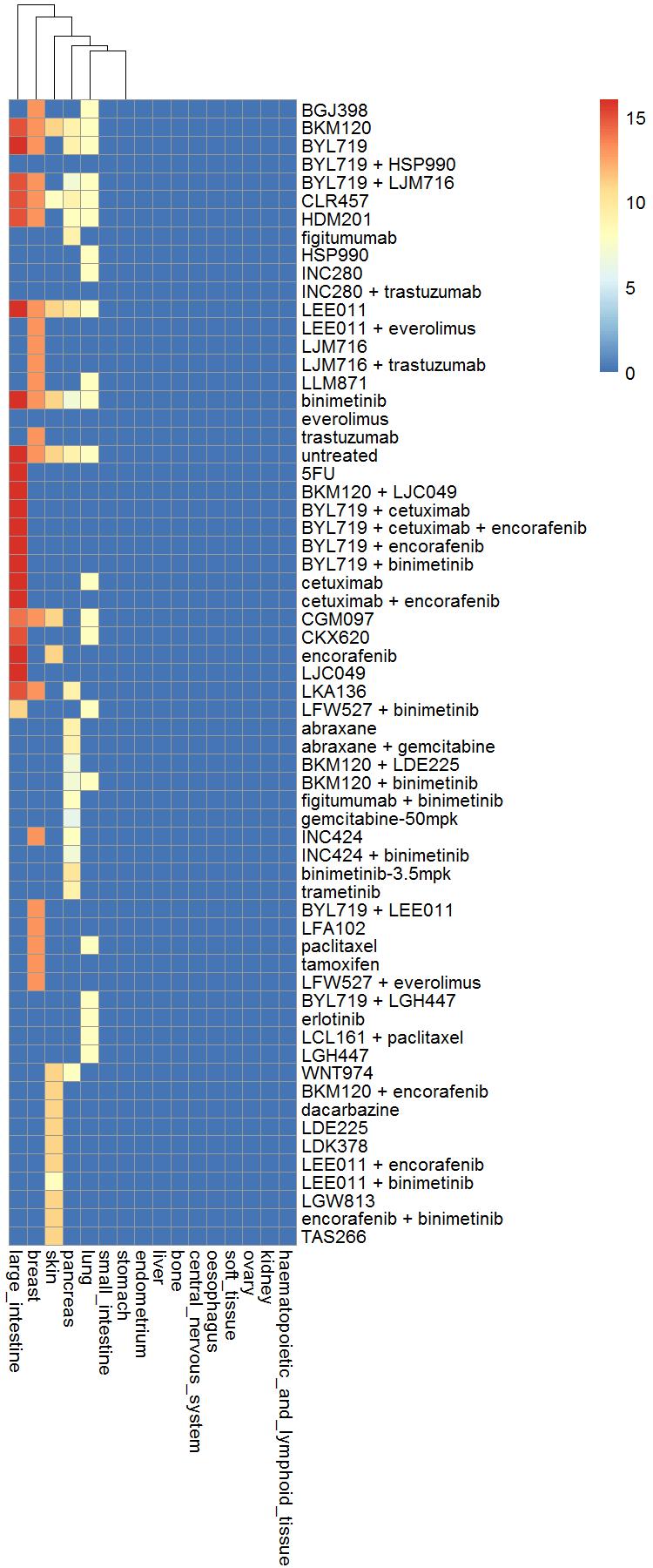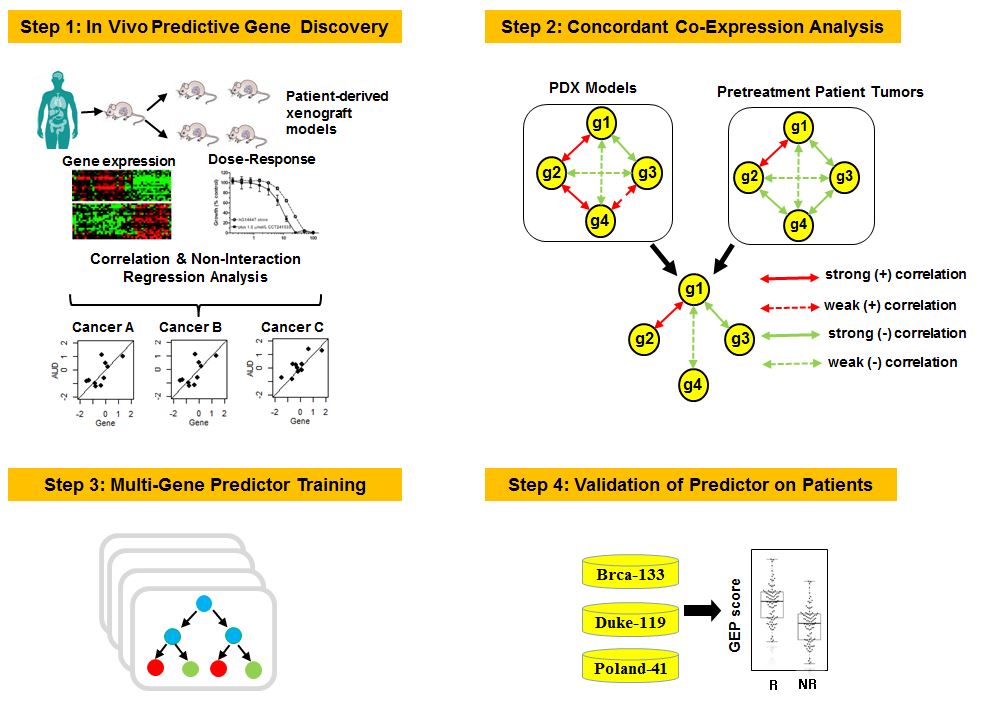Overview
Patient-derived xenografts (PDX) are preclinical models of cancer where the tissue or cells from a patient’s tumor are implanted into an immunodeficient or humanized mouse. PDX has been known to well retain characteristics of its tumor origin from cancer patient.
Our PDXGEM tool is a bioinformatic algorithm to build a predictive multi-gene signatures of cancer patient’s response to anti-cancer drugs (chemotherapy and targeted therapy). It automatically analyzes gene expression data and drug-screening data from PDX tumors .
The pipeline of PDXGEM consists of four subsequent steps:
1) in vivo predictive biomarker screening,
2) Concordant Gene Co-Expression Network Analysis
3) Anti-cancer drug response prediction model training
4) Model Validation
Using PDXGEM, users can build and test an anti-cancer drug response prediction model. The final prediction model and predicted values for drug response can be downloaded during each step of any downstream analysis.
Summary on list of available anti-cancer drugs and cancer types
The following heatmap summarizes the number of available PDX models by screened drugs (row) and cancer type (column).

Implementation details
The step 1 through 3 will be performed on built-in data on gene expression profile and anti-cancer drug screening profiles of PDX models. The last step for a model validation can be done using either built-in publicly available clinical trial patient cohorts or gene expression dataset that users can upload.
Highly predictive and humanized gene expression biomarkers are screened by a statistical evaluation of gene-drug association and comparative analysis of gene-gene networks, so-called Concordance Co-Expression Network Analysis. A machine-learning algorithm is used to train a multi-gene expression predictor.
Input
Validation data: Gene expression profiles of a patient for a certain number of gene probesets.
Output
The final output of the PDXGEM is a continuous prediction score for a patient. The higher score indicates the more responsive the patient is to a drug of interest.
Funding
This work was supported by pilot research grant from the Department of Biostatistics and Bioinformatics at Moffitt Cancer Center.
Process diagram
